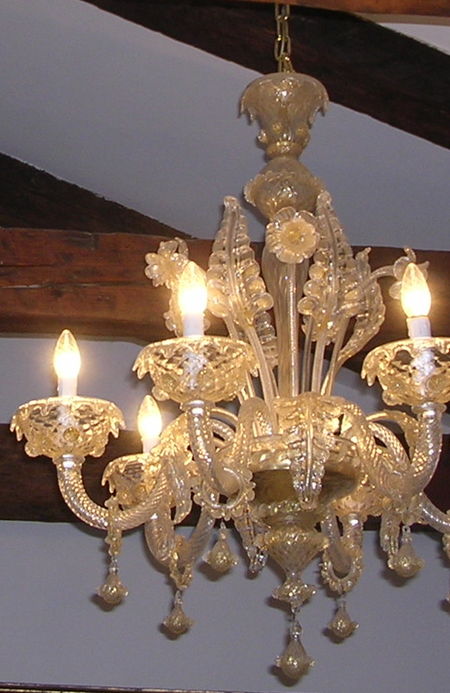How to clean Murano chandeliers
Da Venicewiki, il wiki di Venezia
Murano chandeliers are much sought and recognize, in addition to the invoice, also for the colors which distinguish the Murano glass production.
Each chandelier is composed of dozens and dozens of pieces, some, larger, even by hundreds of pieces, but occasionally need to be cleaned.
Lightly dust with a damp cloth is the first thing to do to take away a bit of patina that is deposited on the cups or on the highest flowers.
Otherwise you can use the electrostatic cloths but they have a serious flaw: easy to become attached to a hedgehog, a leaf, a flower, which is removed from its seat and fatally breaks, it breaks, the contact with other members of the chandelier itself.
Periodically would be necessary to remove all the moving parts of the chandelier and to wash with soap and water, taking care not to wet the gypsum content in the aluminum pan that holds the decorative part of the chandelier, otherwise the plaster flakes, he loses consistency and detaches falling.
After washing it is best to dry thoroughly, because the soap leaves a coating and traps dust, then it becomes more difficult, at a later time, back to dusting and shine your light fixtures.
The manufacturers of chandeliers, which are still plentiful in Murano when providing a classic Venetian chandelier always add some spare parts, but, over time, some parts are broken, it seems impossible, but always the same piece, so the chandelier remains incomplete until it is repositioned the missing piece in its place.
In case you have the chandeliers that have already had the failings please contact alvise@venicewiki.org to ask whether it is possible to reconstruct the piece, or missing pieces, in order to have your great outfit chandelier and make a fine show if in your environments.

